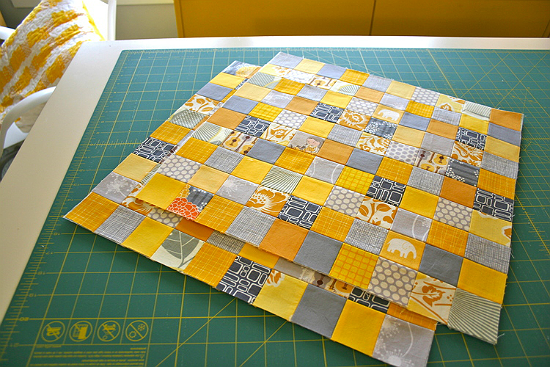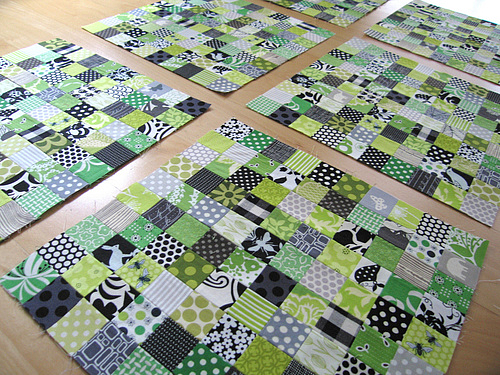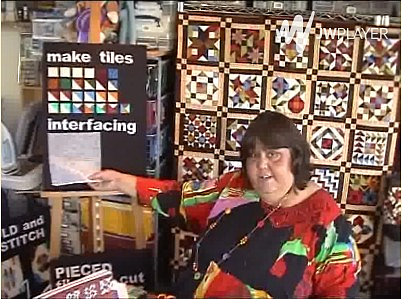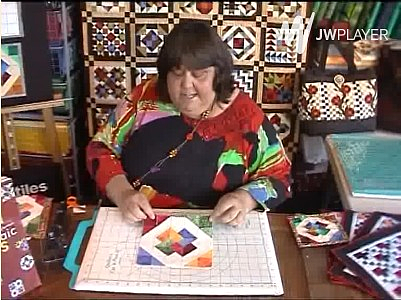An Ingenious Method for Piecing Small Fabric Squares
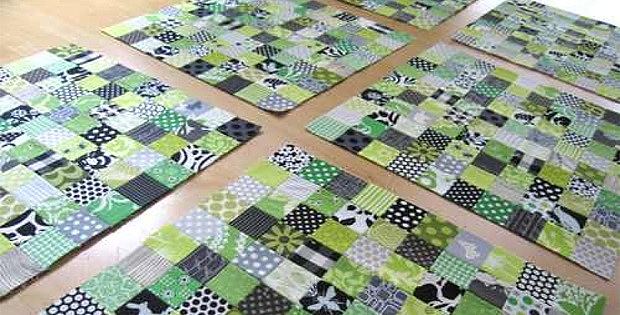
Try This and Get Perfect Quilt Seams in Less Time!
We all know how tedious it can be to sew a lot of little fabric squares together into a quilt block. And, it’s annoyingly easy for the seams to not line up properly.
This method used by Paula Doyle and Elizabeth Hartman changes all that.
Photos courtesy of ohfransson.com.
They use a grid to lay out all the little squares that make up a quilt block on top of lightweight fusible interfacing.
Once the squares are carefully lined up, they are pressed in place. Then the interfacing is folded fabric side together along the rows, and the seams are sewn by stitching along the fold. The result is a finished quilt block with perfect seams in far less time.
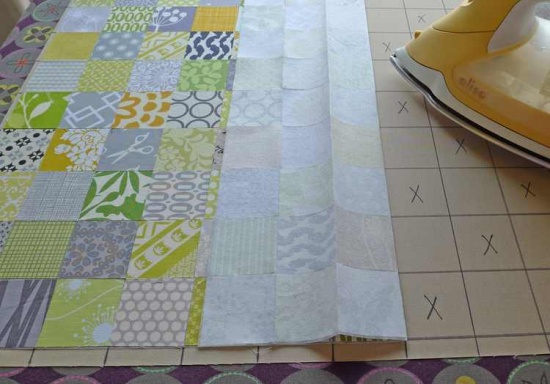
Elizabeth has written an excellent photo tutorial with instructions for making a 15″ square quilt block made up of 100 fabric squares. You can easily adjust that to fit your project by creating a grid specifically for your quilt block.
She likes this method for her “Stamp Collection Blocks” because it allows her to arrange several squares of fabric “just so” before fusing them into place and stitching the seams. Plus, the finished blocks have more variety than can be achieved with strip piecing.
Elizabeth does an excellent job of describing every step of this process in her tutorial, which you need to see in order to fully understand help helpful this method is.
You’ll also learn which interfacing she recommends for the most pliable finished quilt.
Paula Doyle uses a very similar process, which is featured in her book “Mini Mosaic Quilts” (C&T Publishing 2012).
Her “Mini Mosaic Technique” is showcased in two excellent videos. The first is an overview of the process, while the second goes into detail about how to use her method.
Paula goes a step further and shows how to create small quilt blocks made up of squares and triangles using “tiles” and this fuse and stitch technique (it’s all explained in the videos).
Her technique is especially helpful for anyone who is interested in making miniature quilts, sampler quilts, and other projects with blocks made of small fabric pieces.
Keep in mind that any size block with small pieces can be made using this fuse and stitch method, not just miniatures. You simply need to locate or create the appropriately sized grid to work from.
Quilters who try this technique tend to love it, and you may too. This method is sure to save you time and aggravation when sewing together all those little fabric pieces, and increase your accuracy in the process.
Happy quilting!






